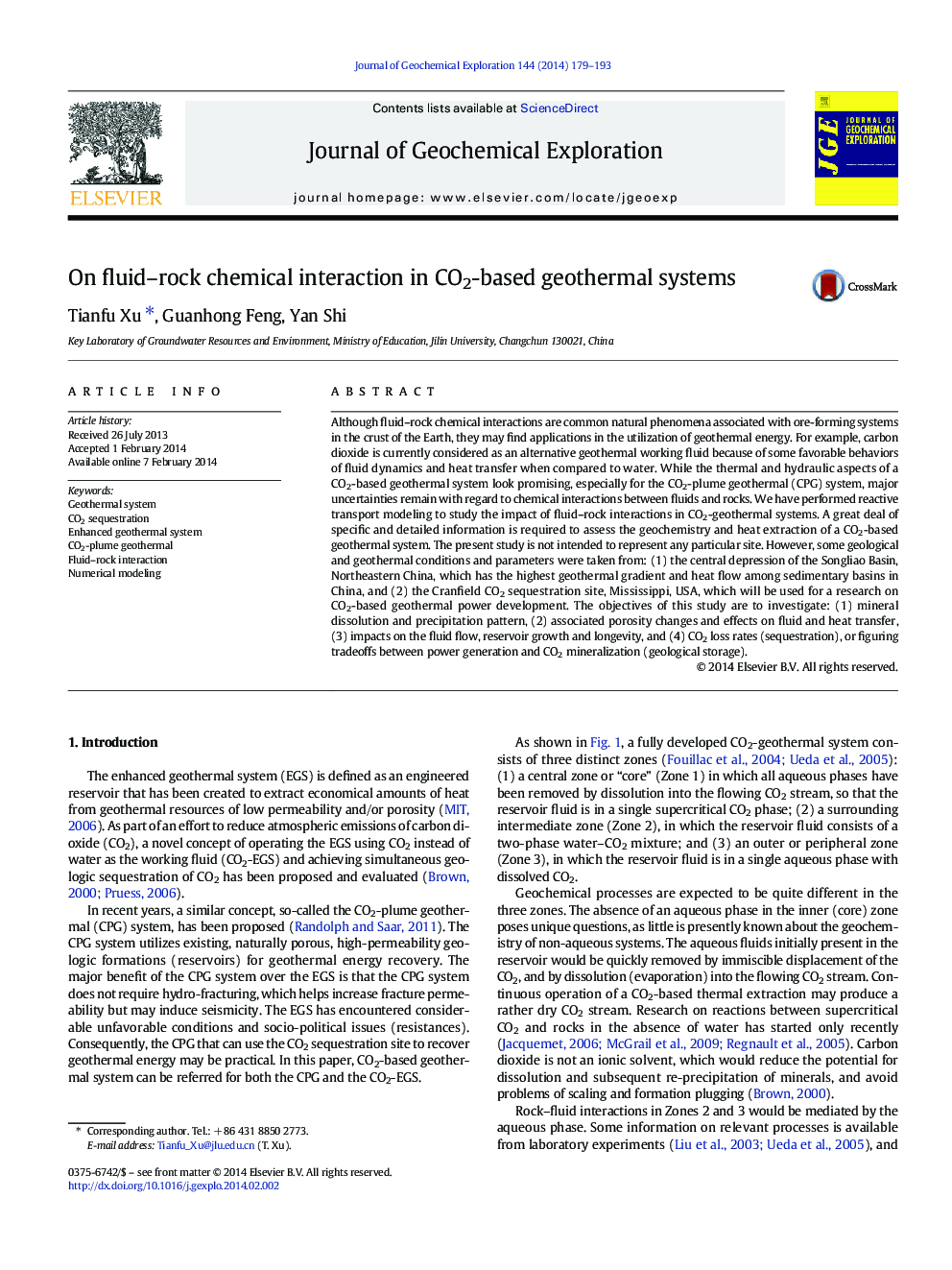| کد مقاله | کد نشریه | سال انتشار | مقاله انگلیسی | نسخه تمام متن |
|---|---|---|---|---|
| 4457265 | 1312600 | 2014 | 15 صفحه PDF | دانلود رایگان |

• Mineral alteration in a CO2-geothermal system affects slightly the porosity.
• Precipitation of carbonate minerals traps some amount of CO2, fixed in solid form.
• Field observations at natural CO2 reservoirs are consistent with our simulations.
• Sustained geothermal energy recovery and CO2 geologic storage can be achieved.
Although fluid–rock chemical interactions are common natural phenomena associated with ore-forming systems in the crust of the Earth, they may find applications in the utilization of geothermal energy. For example, carbon dioxide is currently considered as an alternative geothermal working fluid because of some favorable behaviors of fluid dynamics and heat transfer when compared to water. While the thermal and hydraulic aspects of a CO2-based geothermal system look promising, especially for the CO2-plume geothermal (CPG) system, major uncertainties remain with regard to chemical interactions between fluids and rocks. We have performed reactive transport modeling to study the impact of fluid–rock interactions in CO2-geothermal systems. A great deal of specific and detailed information is required to assess the geochemistry and heat extraction of a CO2-based geothermal system. The present study is not intended to represent any particular site. However, some geological and geothermal conditions and parameters were taken from: (1) the central depression of the Songliao Basin, Northeastern China, which has the highest geothermal gradient and heat flow among sedimentary basins in China, and (2) the Cranfield CO2 sequestration site, Mississippi, USA, which will be used for a research on CO2-based geothermal power development. The objectives of this study are to investigate: (1) mineral dissolution and precipitation pattern, (2) associated porosity changes and effects on fluid and heat transfer, (3) impacts on the fluid flow, reservoir growth and longevity, and (4) CO2 loss rates (sequestration), or figuring tradeoffs between power generation and CO2 mineralization (geological storage).
Journal: Journal of Geochemical Exploration - Volume 144, Part A, September 2014, Pages 179–193